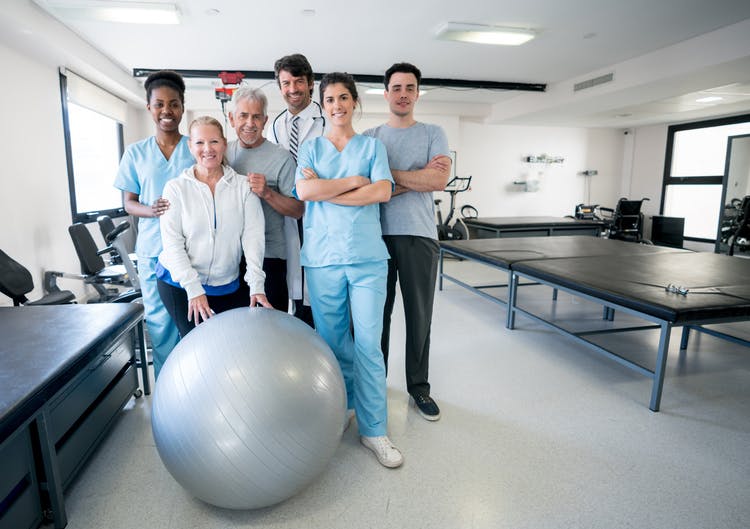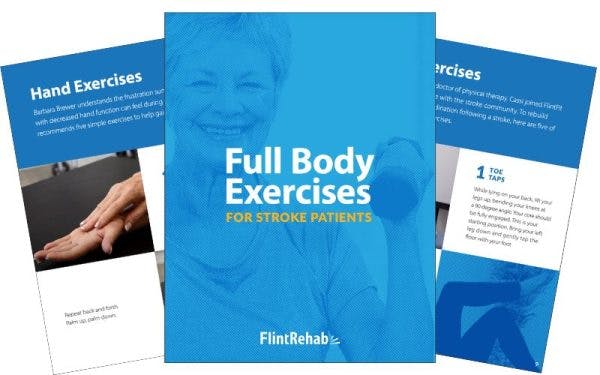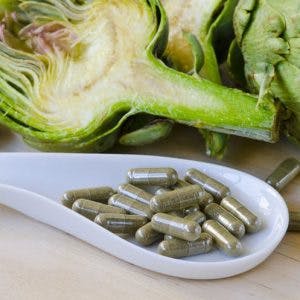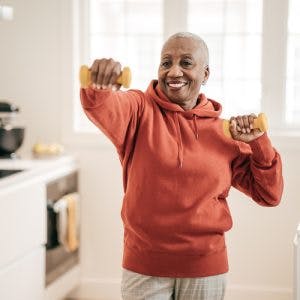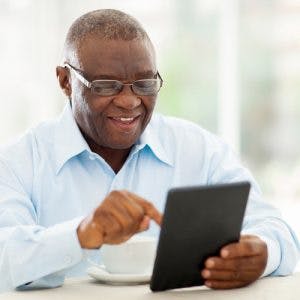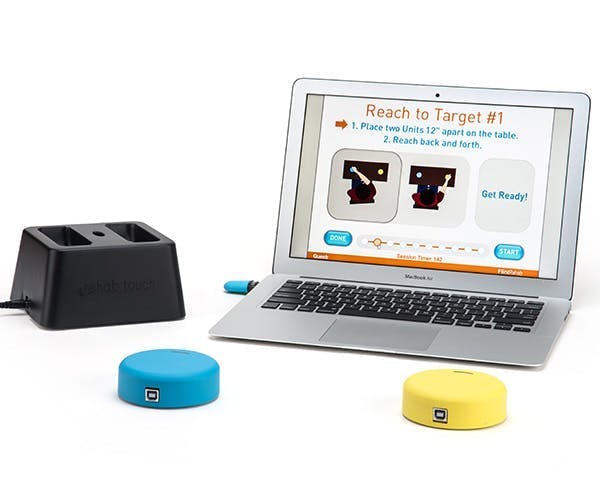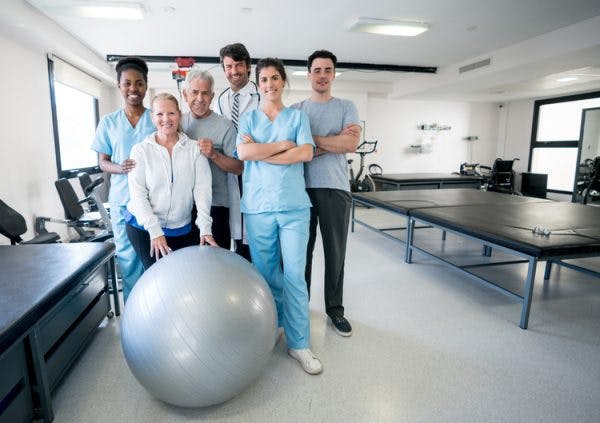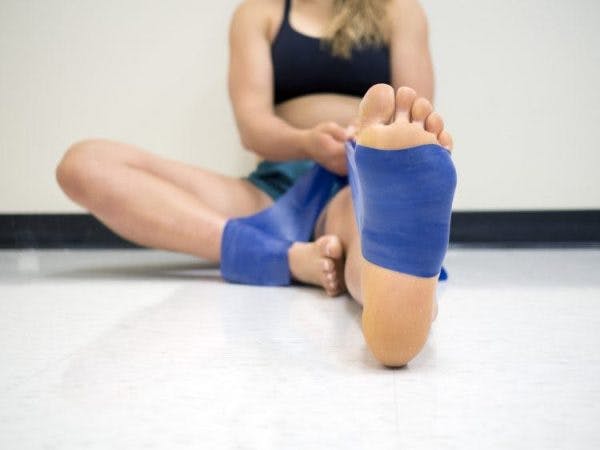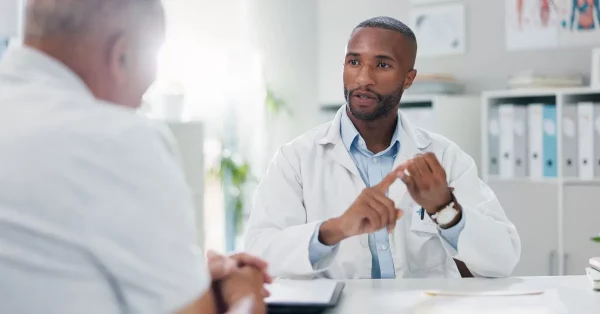With all the stroke recovery treatment options available, how do you know which one is best for you? Since every stroke is different, every person responds to each modality differently. Therefore, it’s important to work with your rehab team to create a comprehensive recovery plan that suits your needs.
To help you have an informed discussion with your therapist, this guide will provide a comprehensive list of stroke rehabilitation techniques to help you find the best treatments for your needs.
Table of contents:
- The best stroke recovery treatment
- New stroke rehab techniques
- Motor recovery methods
- Cognitive recovery modalities
What Is the Best Stroke Recovery Treatment?
If you’re looking for the best treatment for stroke recovery, it comes with an open-ended answer: the best treatment varies from person to person.
Every stroke is different, and every survivor will present with various secondary effects. For example, some may struggle with arm and leg movements, whereas others may present with impaired speech and language functions. Therefore, the best stroke recovery treatment will vary from person to person due to individual impairments and affected functions.
Instead of asking yourself what the best stroke recovery treatment is, try asking different questions, such as:
- What type of secondary effects did I sustain after my stroke?
- What kind of therapies have I already received, and what benefitted me the most?
- Which rehabilitation techniques can I see myself using on a regular basis?
These questions will lead you to the best stroke recovery treatments for you.
However, choosing between available treatment modalities can be challenging. To help you out, the rest of this guide will explain which rehabilitation techniques are available so that you can see what may help with your unique goals.
Let’s start with the latest stroke recovery treatments:
New Stroke Rehabilitation Techniques
Many advancements have occurred in the field of stroke rehabilitation over the last 20 years. While a study from the Stroke Journal notes that more research has been done on stroke treatment versus recovery after stroke, there are still some new rehabilitation techniques that are worth exploring.
Transcranial Magnetic Stimulation
Perhaps the most cutting-edge stroke recovery treatment on this list is transcranial magnetic stimulation. During this therapy, an electromagnetic coil is placed against your scalp, and the electromagnet delivers a magnetic pulse that stimulates the brain. This modality has historically been used to treat psychological symptoms, but recent studies have explored its role in stroke recovery.
In early trials, repetitive transcranial magnetic brain stimulation helped with motor recovery after stroke. Specifically, it was found to help improve walking speed in stroke survivors with hemiplegia (paralysis or weakness of one side of the body).
Because this modality is still undergoing clinical research, there could be a clinical trial recruiting in your area. Visit ClinicalTrials.gov and search for “magnetic brain stimulation for stroke rehabilitation”.
Motion-Sensing, Gamified Neurorehabilitation Devices
In recent years, Flint Rehab has created two motion-sensing, gamified neurorehabilitation devices that help with motor recovery after stroke.
The first is MusicGlove, which is a music-based, sensorized glove that helps survivors exercise their affected hand. A randomized controlled trial found that MusicGlove helps improve hand function within 2 weeks when used for a total of 6 hours per week.
The second neurorehabilitation device is FitMi, which involves two motion-sensing “pucks” that track movement as individuals follow along to prescribed rehabilitation exercises on the screen. A randomized controlled trial found that FitMi can improve mobility 3x faster than traditional therapy with 20 minutes per day.
FitMi is already used in some of America’s top clinics. In FitMi’s reviews, survivors have reported improvement in motor recovery, including individuals with no existing movement.
These motion-sensing neurorehab devices work by motivating individuals to accomplish high repetition of movements, or even initiating movements, which helps rewire the brain through neuroplasticity. The devices make an excellent at-home therapy program to use between visits with your therapist. The power behind these devices is the increased repetitions achieved due to ease and fun with use.
To see more reviews for FitMi and MusicGlove you can check out our YouTube page or visit our website to see personal testimonials and reviews.
Virtual Reality
Virtual reality and interactive video gaming have emerged as exciting, new stroke rehabilitation techniques on the block; and excitement could be its strongest feature.
While a recent meta-analysis did not find virtual reality to be more effective than conventional therapy, some evidence showed that motor improvements increased when virtual reality was used alongside conventional therapy to increase overall therapy hours.
In other words, virtual reality is not a superior rehabilitation technique, but it can help with motor recovery if it causes you to increase the total amount of time spent doing therapy.
Evidence-Based Stroke Recovery Treatment for Motor Recovery
Along with new and noteworthy stroke recovery treatments are many tried-and-true modalities worth exploring. In fact, it often works best to use a combination of modalities for the best results.
Here’s a rundown of some popular and effective stroke recovery treatments that can help maximize motor recovery after stroke. Then, we will dig into cognitive recovery after this section.
Rehabilitation Exercise
Stroke exercises are the bread and butter of rehabilitation. During inpatient rehabilitation, survivors work alongside their therapists to accomplish massed practice of various physical and occupational therapy exercises.
After discharge from inpatient rehabilitation, survivors often see their therapists once a week during outpatient rehabilitation. They are often provided with a written sheet of exercises to practice at home between sessions.
However, studies show that these sheets of exercises have poor compliance rates. And poor compliance will lead to no recovery. Recovery of movement ability is closely tied to the amount of movement attempts. This is why more engaging stroke recovery treatments are desperately needed to increase adherence to at-home rehab programs. Engaging games and making an exercise fun are the best ways to increase repetition of home programs.
Passive Rehabilitation Exercise
For individuals with hemiplegia, passive exercise is a great stroke recovery treatment. It involves movement that is not initiated by your muscles. Instead, a therapist or trained caregiver moves your limbs through a movement for you; or you can use your non-affected side to assist your affected side.
This rehabilitation technique is particularly helpful for hemiplegia because it helps get the affected limbs moving and discourages learned-nonuse, a condition that occurs when mobility continues to worsen due to neglect. Best of all, although you aren’t initiating the movement yourself, passive exercise still stimulates the parts of the brain involved in muscle movement. This is likely due to the fact that the passive movements are providing sensory stimulation to your cortex. In other words, even if you aren’t initiating the movement yourself, passive movement still helps rewire the brain and encourage motor recovery.
Mental Practice
Mental practice is another stroke recovery treatment that’s ideal for individuals with severely limited mobility or paralysis. It involves mentally visualizing yourself moving. You can visualize yourself doing your rehab exercises, or you can visualize other types of movement, such as walking across a lawn or along a sandy beach.
Studies have shown that mental practice sparks change in the same areas of the brain that control movement, such as the motor and premotor areas. Evidence also shows that combining mental practice with physical practice improves mobility more than just physical practice alone.
Mental practice is simple, noninvasive, free, and accessible. It’s the perfect addition to any stroke rehabilitation regimen, especially individuals recovering from paralysis.
Neurologic Music Therapy
Music helps enrich the environment, which engages multiple regions of the brain. It has an established track record helping with motor, speech, and cognitive recovery after stroke.
Particularly with motor recovery, neurologic music therapy works by encouraging individuals to sync their movements with rhythm and beat. For example, in gait rehabilitation, music therapy aims to sync leg movements with a musical beat. In hand rehabilitation, music stimulates your brain to facilitate initiation of movements so you aim to synchronize your finger movement with a musical beat. This is easily accomplished when using the MusicGlove.
Of all its applications, neurologic music therapy has the most evidence supporting its use in motor recovery after stroke, which is good news for survivors that want an entertaining way to improve movement.
Mirror Therapy
Mirror therapy is a promising modality for stroke survivors who struggle with severely limited mobility in their affected hand, or even hand paralysis. It works by placing a tabletop mirror over the affected hand and practicing hand therapy exercises with the non-affected hand. The reflection “tricks” the brain into thinking that you’re moving both hands, which helps rewire the brain.
The most promising element of mirror therapy is that it has helped individuals with no hand movement start to regain movement. It works best to begin this rehabilitation modality with your therapist, who can show you how it works and provide exercises to do. Then, you can get your own tabletop mirror to continue practicing at home.
(Related: The best hand exercise equipment for stroke patients)
Constraint-Induced Movement Therapy
Constraint-Induced Movement Therapy (CIMT) is a stroke rehabilitation technique that is aggressive in its approach, but it is arguably the most effective intervention for recovery of the upper limb after a stroke. It involves restricting your unaffected side while forcing the use of your affected side.
What makes this modality aggressive is that it can be quite frustrating to the individual if the affected side has severely limited mobility and then the individual is asked to complete exercises with that side for multiple hours per day, as typical CIMT protocol requires.
Although it can be frustrating and aggressive, CIMT has an established track record of helping improve movement after stroke.
Some therapists on the medical review team here at Flint Rehab believe that individuals should feel challenged but not frustrated by their rehabilitation program, which promotes the ideal conditions for both compliance and therefore recovery.
Perhaps survivors can adapt CIMT to limit frustration while still encouraging recovery by placing an oven mitt over the non-affected hand for shorter intervals during daily activities. This is just one example of how you can adapt various stroke recovery treatments to meet your unique needs. Your therapist is a great resource for tips on personalizing your individual program.
Also, it’s worth noting that CIMT is particularly helpful for patients who struggle with neglecting their affected arm. In fact, CIMT is a superior method for combating learned-nonuse.
Electrical Stimulation
Electrical stimulation is a rehabilitation technique that is particularly useful for helping with severe mobility limitations and even post-stroke paralysis. It works by placing electrodes over the skin and sending electrical impulses directly to the affected muscles. Not only does this help stimulate the brain, but it initiates movement in the affected muscles, which is helpful for individuals with paralysis.
For the best results, combine electrical stimulation with rehabilitation exercise. This encourages better motor recovery than electrical stimulation alone.
When first starting with electrical stimulation, train under your therapist’s supervision. They can show you the proper locations to place the electrodes, along with how to safely operate the equipment.
(Related: The best stroke rehab equipment for safely recovering at home)
Cognitive Stroke Recovery Treatments
In addition to motor recovery, you may have other areas that need improvement following a stroke. Cognitive skills such as memory, critical thinking, attention, or communication skills can be affected by stroke as well. In addition, your body’s ability to feel and alert your brain to a variety of sensations can be impaired by a stroke.
Below are a few tips to address some of these needs:
Sensory Reeducation
Sensory reeducation is a form of therapy that helps patients improve their senses. This is helpful for overcoming sensory issues like post-stroke numbness, tingling sensations, or difficulty feeling hot and cold.
During this therapy, individuals practice sensory reeducation exercises to help stimulate and rewire the brain. For example, a therapist may bury different-textured objects in a bag of beans and ask the survivor to retrieve the objects. The stimulation of the different textures helps with sensory reeducation. Also, the patient has to focus attention on their position senses in the hand which is stimulating to proprioception and therefore enhancing recovery.
Speech or Cognitive Rehabilitation
In addition to movement challenges, you may also have limitations in your communication skills. A speech-language pathologist (SLP) can provide targeted exercises for your specific communication challenges. Just like movement exercises, you will need many repetitions to stimulate the brain recovery required for results.
SLPs and sometimes occupational therapists also help diagnose individuals who struggle with cognitive functions such as memory, attention, or self-control. Ask your doctor to refer you for an evaluation by a skilled therapist if you are concerned you have some of these deficits as a result of your stroke.
Once you have a treatment plan for either speech or cognitive impairments from an SLP or an OT, you can implement a home program, which will be improved by support from apps like the CT Speech & Cognitive Therapy App. It contains over 100,000 exercises that patients can access right from their smartphone or tablet. Some examples of these exercises include speech therapy exercises or cognitive exercises.
Want to learn more about the CT Speech and Cognitive Therapy App? Get Started Here.
(Link opens a pop-up for uninterrupted reading.)
Just as physical therapy exercises help improve movement, these cognitive-communication exercises help improve cognitive and communication skills. Massed practice and repetition are key to stimulating the brain and engaging neuroplasticity. This is most realistic from home. That’s why these apps are so essential to aid in recovery. Individuals can work alongside an OT or SLP in the clinic and follow a personalized cognitive-communication exercise plan at home.
Vision Training
Over half of stroke survivors sustain vision problems – not to be confused with problems with one’s eyesight. Eyesight refers to how the eyes capture images while vision refers to how the brain processes those images.
You can improve your vision after a stroke by working with a neuro-optometrist who can diagnose your condition and recommend tailored eye exercises. Some exercises involve retraining the muscles that control your eyes while other exercises focus on retraining the brain to process visual input. Working with an expert is a must.
Creating Your Stroke Recovery Treatment Plan
Now that you’ve browsed these stroke recovery treatments, it’s time to act. Which treatment modalities are specific to your needs? What can you see yourself doing on a regular basis?
Repetition and consistency are two keys to recovery. No matter which treatment modalities you choose, the ultimate goal is to find something that helps you get the practice you need in a format that you find motivating. Making movements or your cognitive/speech training into a game helps you achieve many more repetitions with fun. So go have some fun and get better too!

